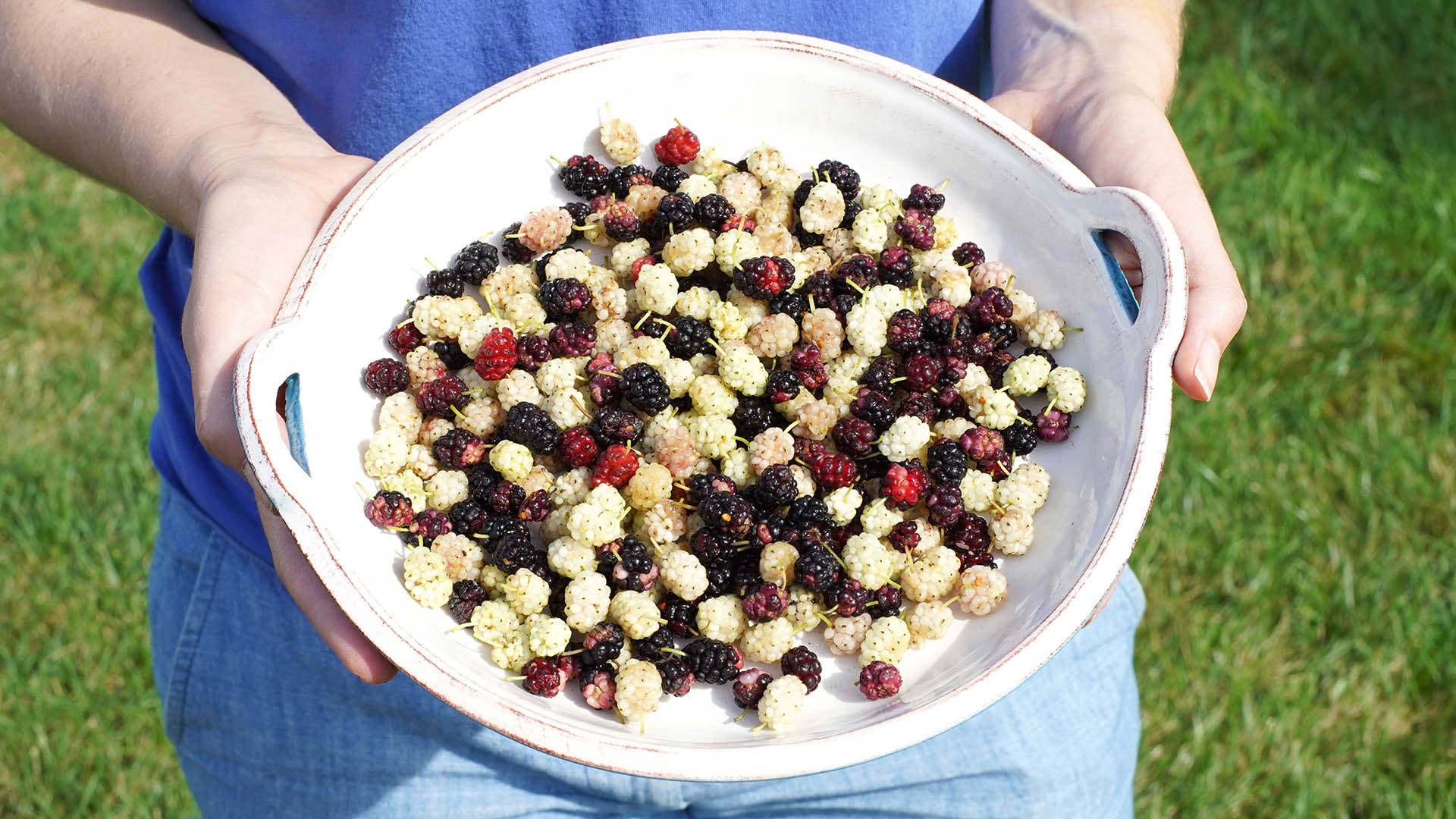Here We Go 'Round The Mulberry Bush In Search Of Usable Berries
Like many of our readers, I've spent a lot of time at home this summer. So much so that I've had to invent ways to entertain myself while looking at the same house and backyard for four months and counting. We constructed a sizable vegetable patch, planted flowers and shrubs, reseeded bare grass patches, and bought kiddie pools and sprinklers and water balloons. In a moment of weakness, we even bought our son a pedal-operated mini forklift. He carries the watering can on it, which is both charming and lazy.
Eating vegetables and herbs out of the garden has brought particular joy to our lives this summer. As my family ate our way through kale, beans, lettuce, chard, and bok choy like Very Hungry Caterpillars, my eye turned to an untapped resource: the mulberry trees in our backyard. Boredom begets questions you may not have previously asked. Like, "Could I eat those mulberries?"
Many arborists consider mulberries a "junk tree." As in, a wild-sown tree that crowds out indigenous species with its rapid growth and soil-nutrient-raiding roots. I beg to differ. Apart from the entertainment (I use that word loosely) provided by the berry-crazed wildlife of my yard, these trees provide actual edible fruit. I will admit to romanticizing the idea of using my own wild mulberries. I envisioned making plum-colored mulberry wine, dark cordials, thick syrups, and jammy crumbles. All this inspiration, and I had never even tasted a mulberry.
First, I had to make sure they weren't poisonous. I read about a mulberry lookalike called a pokeberry that can make you sick. Pokeberry trees are more like shrubs, rarely topping five feet. Mulberry trees are decidedly trees, sprouting plump berries ranging from ivory to rosé to indigo in color. The good news was these trees in my yard were not pokeberries. The bad news: they were trees, which meant I couldn't reach the berries. I had no ladder, no long-handled picking tools. Like a befuddled bear, I stood under the trees wondering how I would get the tasty treasures. I had to find another way. And that way was combing through my yard looking for fallen mulberries in the deep grass.
Harvesting windfall mulberries was tedious. I was pitted against the robins and squirrels, who patrolled the area as soon as my back was turned. After two hours, I had collected a scant three cups, minus the pregnawed berries, dirt clods, and squashed bits. This was not the bountiful harvest I envisioned. My purpled-hue dreams of recipes featuring mulberries distilled themselves into one feasible dish: jam.
The mulberries contain a good amount of pectin on their own, but I wanted a thick jam so I grated in some green apple for its thickening properties. Tiny green stems run deep into the mulberries, and pulling them out is difficult and not worth it. Once cooked, the stems are undetectable, and no more a bother than small seeds.
The resulting jam was mildly sweet with a raisiny, wine-like taste and a deeply satisfying purple hue. We enjoyed it with strawberry scones and clotted cream, but it would also be right at home on a fancy cheese plate with Camembert and crackers.
Perhaps the work involved in harvesting made my jam feel more special. Or maybe it's because mulberries are just downright tasty. Either way, I'd do it again. If the robins leave me any.

Mulberry Jam
Makes about 1½ cups
- 2 cups mulberries, rinsed well
- 1 cup sugar
- 4 Tbsp. water
- 2-3 Tbsp. grated green apple
In a medium saucepan, combine all ingredients and stir to coat with the sugar. Bring to a boil over medium high heat and simmer rapidly for 7-10 minutes. Watch the pot, stirring as need to prevent any bubbling over. The berries should soften and the apple bits all but disappear. All foam should subside, but feel free to skim off any that remains. Scrape jam into a container, let cool, and chill. The jam will thicken considerably once cool.
Serve with toast or scones and cream, or as an accompaniment to a cheese plate.
